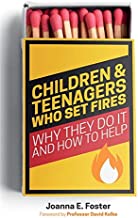Pyromania
Pyromania is an impulse control disorder in which individuals repeatedly fail to resist impulses to deliberately start fires, in order to relieve some tension or for instant gratification. The term pyromania comes from the Greek word πῦρ (pyr, fire).
Cluster Number:
Wiki Number: PW180
Diagnosis: Pyromania
US Patients:
World Patients:
Sex Ratio: M10;F
Age Onset:
Brain Area: impulse control;
Symptoms: setting fires to relieve own tension, not for vengance or profit, to induce euphoria and enjoy fire houses and fire-fighters
Progression:
Causes: fatherless homes light fires; parental neglect, fire lit as a stress reliever
Medications: Used for adults, resistant to therapy
Therapies: CBT, parental training and correcting assumptions; adults are usually less cooperative with CBT than children or teenagers
Youtube Video: Pyromania
(There are also several Youtube Videos on a song, “Pyromania.”)
Amazon or Library Book: Children and Teenagers Who Set Fires
Click the book to link or order from Amazon.

